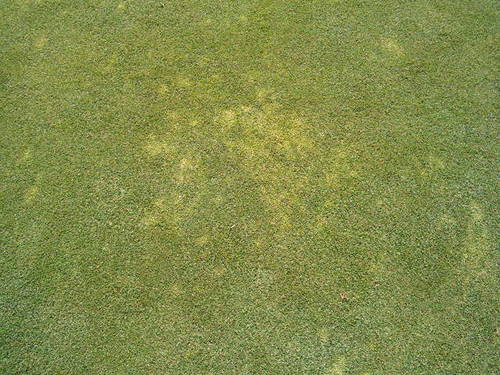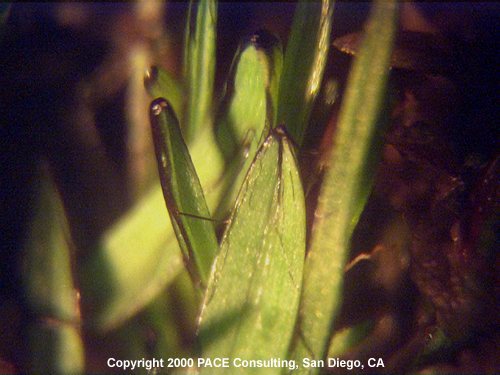
A few samples of anthracnose on creeping bentgrass have been submitted to our Turf Diagnostics Lab at NC State, and we also have some developing on 'Dominant Plus' creeping bent at our research center. Conditions have fluctuated between hot and wet then hot and dry, which is ideal for anthracnose development. If you are growing a bentgrass cultivar that is susceptible to anthracnose, be sure that you have a solid preventive fungicide program in place as soon as possible.
Not all bentgrass varieties are susceptible to anthracnose. The Penn A and G series cultivars have good resistance to the disease, and problems are rarely seen on these grasses. Older varieties, like Penncross, Pennlinks, Dominant, and even Crenshaw and L-93, are most susceptible.
Beware that fungicide resistance is a common problem in anthracnose populations. Our recent survey of C. cereale populations in NC showed that resistance to the QoI class (Heritage, Insignia, Compass, Disarm) and thiophanate-methyl (3336 and equivalents) is widespread. In fact, we had a hard time finding populations that are sensitive! Bottom line - unless you know that your populations are sensitive to these fungicides, do not rely on them for anthracnose control. For other anthracnose control options, please see our Anthracnose Information Sheet on TurfFiles. Remember to avoid the DMI fungicides if temperatures above 90F are in the forecast.
If you would like to find out if your anthracnose population is resistant or sensitive to various fungicides, the NC State Turf Diagnostics Lab offers fungicide resistance screening. Please see our website for more details.

Right on time, symptoms of summer patch have started to appear in North Carolina as well. It seems like this disease always starts to appear right around the 4th of July. If you are managing Kentucky bluegrass or annual bluegrass, or have bentgrass greens with a history of summer patch problems, be sure to continue your preventive applications for this disease. The summer patch pathogen is active throughout the summer, as long as average daily soil temperatures are below 80-85F.

























































 Just a few updates from the Midwest on diseases. A few reports of brown ring patch have been trickling in. The image to the left is from Dr. Derek Settle with the Chicago District Golf Association showing stand symptoms of brown ring patch. We have also had a few samples come into the Turfgrass Diagnostic Lab at UW-Madison. Kentucky bluegrass is struggling with powdery mildew and melting out throughout the Midwest. Finally dollar spot finally reared its ugly head last week when temperatures were warm and humidity levels were high. However, we have shifted back to drier conditions making it difficult for the disease to continue developing.
Just a few updates from the Midwest on diseases. A few reports of brown ring patch have been trickling in. The image to the left is from Dr. Derek Settle with the Chicago District Golf Association showing stand symptoms of brown ring patch. We have also had a few samples come into the Turfgrass Diagnostic Lab at UW-Madison. Kentucky bluegrass is struggling with powdery mildew and melting out throughout the Midwest. Finally dollar spot finally reared its ugly head last week when temperatures were warm and humidity levels were high. However, we have shifted back to drier conditions making it difficult for the disease to continue developing.